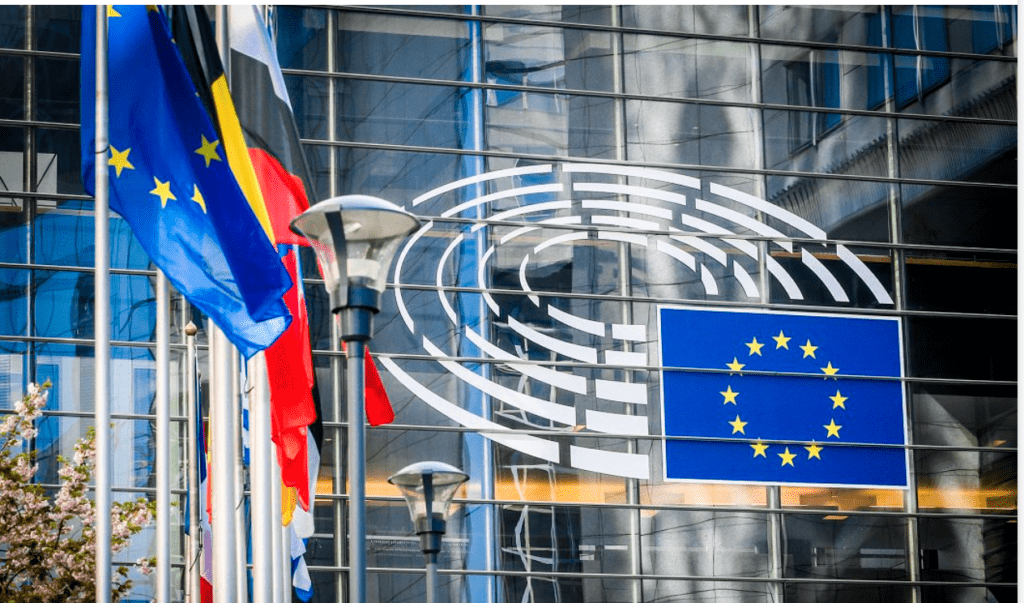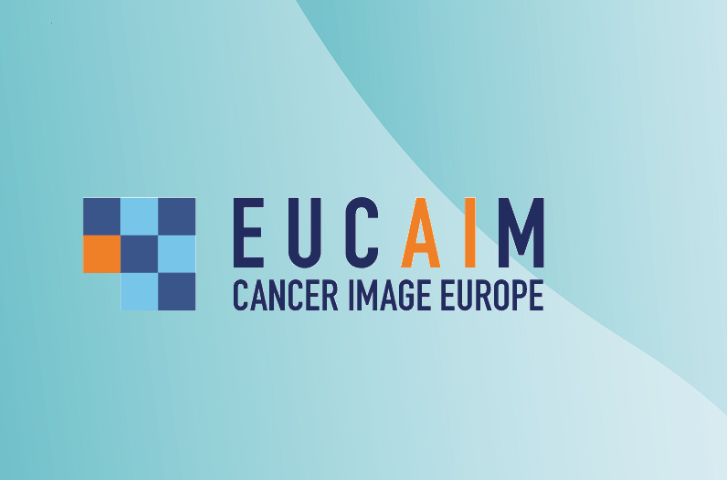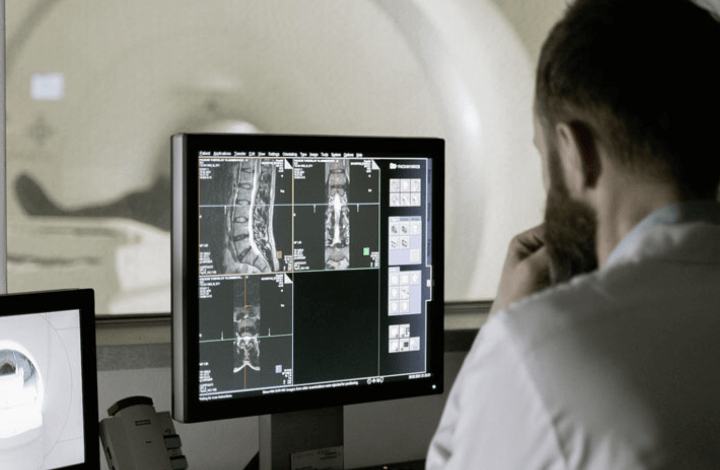An overview of the EUropean Federation for CAncer IMages (EUCAIM) initiative to catalyse innovation and adoption of digital technologies in cancer care, and faster and more accurate clinical decision-making, diagnostics, treatment, and predictive medicine for cancer patients.

Key Points
- The EUropean Federation for CAncer IMages (EUCAIM) is the main activity of the European Cancer Imaging Initiative, which is spearheaded by the European Commission as part of the ambitious European Beating Cancer Plan.
- It is a four-year endeavour involving 76 partners to establish a comprehensive pan-European image-centric digital federated infrastructure.
- EUCAIM aims to tackle the fragmentation prevalent in existing cancer image repositories.
- The main goal is to foster innovation in medical imaging for the benefit of cancer patients, by allowing researchers to perform reproducible research with medical images, empower clinicians to construct research projects with a clinical impact, and allow companies to develop and validate new Medical Device Software (MDSW) based on AI that improve European competitiveness and leadership in the space.
What is EUCAIM?
The EUropean Federation for CAncer IMages (EUCAIM) is the cornerstone of the European Cancer Imaging Initiative, which is spearheaded by the European Commission as part of the ambitious European Beating Cancer Plan (EBCP). The primary objective is to catalyse innovation and the adoption of digital technologies in cancer care, aiming for faster and more accurate clinical decision-making, diagnostics, treatment, and predictive medicine for cancer patients.
Kicking off in January 2023, this 4-year endeavour brings together a consortium of 76 partners dedicated to establishing a comprehensive pan-European digital federated infrastructure. This infrastructure has two main axes. As a central repository, EUCAIM will house FAIR (Findable, Accessible, Interoperable and Reusable) cancer-related images, all de-identified and sourced from real-world cases. The project design aims to maintain data sovereignty for providers while offering a robust platform, including an Atlas of Cancer Images, for developing and accessing Artificial Intelligence (AI) tools tailored for precision medicine.
EUCAIM endeavours to address the fragmentation evident in existing cancer image repositories. Leveraging the foundations laid by the AI for Health Imaging (AI4HI) initiative, alongside European research infrastructures and national/regional repositories, it aspires to harmonise and integrate disparate datasets. This comprehensive strategy embraces diverse data modalities, spanning from clinical images to pathology, molecular, and laboratory data.
EUCAIM is also creating a federated hospital-based Data Spaces approach, based on common data model interoperability, for deploying fast observational studies that will later populate the centralised Image Repository. The main goal of EUCAIM is to allow AI researchers to perform research on high-quality large datasets, empower clinicians and researchers to construct prognostic/predictive models with a potential clinical impact, and allow companies to productise them or to develop and validate new AI solutions as Medical Devices that will help cancer patients by an improved patient stratification in successful treatment indication, minimising undesired situations such as non-responders to treatment, or hyperprogressors in immunotherapy.

The European Commission funds half of the project, and the other half is funded by the project partners. This risk-sharing co-funding is key for all the partners to put their knowledge, personal skills, and resources into it. The pharmaceutical industry is also welcome to join this initiative, so that everyone is working towards the overall benefit and improved patient outcomes.
Key Patient Benefits
The key benefits of EUCAIM will be a better understanding of personalised medicine, integrating radiomics and imaging biomarkers with the relevant clinical and molecular data that will provide the ability to offer precise treatment at the right time. That’s the main achievement that AI, medical imaging, and interoperability with clinical, molecular, laboratory, and genetic data will be able to provide in so many different clinical scenarios of patients with cancer and medical images at diagnosis and follow-up, using the infrastructure that is being developed.
Challenges and Obstacles
In research, accessing data at the origin within hospitals, poses a main challenge. Institutions, academies, and researchers are often reluctant to transfer data and even to allow their data to be shared. There are also legal issues in different countries and communities, issues related to data provision, AI developments, and the moving landscape at the European level with new regulations. Slowly and gradually, EUCAIM is solving these obstacles working on safe data transfers, developing a federated and distributed approach to data, and linking different research projects, programmes and grants while fostering screening programmes and engaging hospitals with a structured database to construct fast observational studies.
The project partners are involved in three work packages dealing with data interoperability aspects. As one of the most important goals is to ensure image and related data quality, quality control tools are being developed within the infrastructure. Our objective is not just to provide millions of cases to the research community, but to also ensure that those cases have been checked for quality and that the able to generate the adequate information.
Use and Implementation of Artificial Intelligence
EUCAIM isdeeply engaged in AI developments and is part of the AI for Health Imaging Initiative, a flagship of Europe Beating Cancer Plan. This platform is based on the previous work of five important European research projects on AI and medical imaging, paving the way for AI to generate meaningful and appropriate clinical decision support systems. EUCAIM is an infrastructure where data, tools and research communities will develop their research projects.
One of the main limitations of AI in Medicine is access to the huge amount of data needed to train models. There is a large variability in the medical images obtained from the different vendors and technical acquisition protocols. If AI is exposed to a huge number of medical images, the reproducibility of the AI solutions will be much higher. Transferring those solutions from research to reality will be a large step towards the implementation of precision and personalised medicine, which remains our most important goal.
AI is changing radiology with exponential developments. The solutions being developed today are becoming much faster, more accurate, and more precise. It is important to realise that the workload for radiologists will be lower if AI solutions are used. Since there is already a problem with shortages of radiologists, it is becoming increasingly evident the help that AI could provide, giving radiologists more time to focus on other issues such as discussing at multidisciplinary meetings, evaluating innovation projects or improving guidelines at the hospital, and not just reading conventional exams.
EUCAIM and the Cancer Pathway
EUCAIM is designed to help researchers improve the disease pathway for cancer diagnoses and treatment. There are many different types of cancers that are diagnosed late in their progression. By using AI solutions and computer performance capabilities, it is possible to depict really small lesions before they grow or generate distant disease. Once it is known that a lesion is there, its characterisation, definition of phenotypic expression, aggressiveness based on radiomic signatures, and this knowledge integration with available pathological, molecular or genetic data will provide a more precise treatment for this individual patient.
There is also a need for better screening programmes and fast and high-quality exams. There is a need to recognise that low-dose CT with AI reconstruction can pick up lesions much better. MR with AI reconstruction is much faster. With the right technology, a full MR exam can be performed in five minutes. Being faster, being able to study and evaluate many more patients, and being able to read and pick up lesions with the help of AI, screening with images will be deployed in most countries to fight against cancer, picking up tumours so they can be treated earlier.
The goal is not just to pick up lesions but to identify those that are relevant and clinically significant. In prostate screening, we should detect not just cancerous lesions but tumours that are clinically significant. It’s quite important to identify relevant tumours to avoid performing biopsies and prostatectomies on patients who should not be exposed to them. AI solutions that will automatically annotate lesions as non-significant and non-relevant are needed to prevent unnecessary procedures and treatments.
Impact of Healthcare Regulations
Regulations for AI are being continuously defined at the European level. EUCAIM is, in some way, helping define how medical images should be part of this health data space, how organisations and infrastructures can be the door to improve data access facilities for researchers, and how AI tools can be properly tuned, trained, and tested and validated in our infrastructure. A European health data space and AI regulations are needed to allow data to be used for the best of the patients. These tools can help improve access to data and facilitate the use of data within the ethical requirements for research. EUCAIM fully recognises the importance of these regulatory issues. In recognising the need for a robust European Union capable of conducting critical medical research, policymakers are increasingly committed to participating in the unified European regulatory framework and the European health data space. This framework supports both primary functions, such as clinical assistance and cross-border medication, and secondary uses, including research and innovation. The most important regulations influencing the impact of EUCAIM in clinical innovation are the Medical Device Regulation (MDR) and the AI Act. Both need to be combined and considered by companies filing for the CE mark of new AI tools implemented. EUCAIM will allow to have a common data registry, avoiding the need for companies to establish parallel agreements with different hospitals to create their products. EUCAIM will accelerate the way AI Medical Devices are created in Europe.

Accelerating Integrated Care
Healthcare organisations and radiology departments are likely to achieve a significant impact with «Integrated Care», looking forward to decreased time to precise diagnosis, decreased time to the right treatment, decreased adverse events due to toxicities, and decreased time to curation. Integrated care is related to healthcare digitalisation, and EUCAIM is fostering the digital transformation of hospitals. EUCAIM is helping hospitals to better define their health records and also helping researchers to easily obtain quality data from those records in a fast, reproducible and standard way using common data models, common data elements, and the interoperability between the different tools. In this way, the project is helping and pushing the digital standardisation and transformation of the healthcare system, helping researchers to access the high-quality datasets they need for their research and innovation. That means when a healthcare organisation follows the path of a digital transformation, EUCAIM can collaborate and guide it in the right direction. The project is also shaping the organisation of data Spaces within hospitals, guiding governments in establishing standards for data storage and the presentation of catalogues to researchers. These efforts are crucial for the success of EUCAIM.

Focus and Future Outlook
There is still a long way to go when it comes to the proper implementation ofpersonalised medicine. This is mainly because there is a limitation on the translation from research to real practice environments. This can be solved through medical imaging harmonisation, integration of radiomics with molecular and genetic data, datasets interoperability and data selection strategies, including only those variables that will make accurate predictions to facilitate early diagnosis and detection of lesions even before they appear, and knowing the aggressiveness of the tumours even if there is no possibility to obtain biopsies every two months or three months. Our ultimate goal is to provide the best treatment options to the right patients at the right time.
EUCAIM has76 partners and 21 hospitals already engaged, plus 40 new hospitals on the waiting list willing to be engaged. There are more than 160 stakeholders, including institutions, universities, SMEs, and companies, that are willing to be engaged. There are several companies in the AI software market that are involved with the project and want to train, test, and validate their results. Many professional societies, like oncologists, urologists, and neurologists, are willing to explore how medical imaging and AI can be used in those prediction models to improve their patients’ stratification, diagnosis and grading and pharmaceutical companies are willing to use these AI tools for more effective clinical trials. That means intra-trial cohort stratification and clearly defining which patients will benefit from the evaluated drugs and which ones will most probably fail before the trial starts. Academia is also engaged with the project, as are patient associations and policymakers. This entire network is dedicated to enhancing the use of images for the optimal benefit of patients.
In the near future, EUCAIM will include new partners through Open Calls to enlarge datasets, the ability to access data, the capability to develop the AI tools that are really needed and to solve problems within the domain of medical imaging and AI. EUCAIM is a four-year project, and the goal is to have many more institutions, programmes, and projects involved and engaged within the platform by the end of the development of the infrastructure for EUCAIM. This will be the real success – exposing AI to the huge amount of data that the project will be able to collect, either central or federated. Please visit the EUCAIM website to stay updated on all these opportunities: https://cancerimage.eu/
*Este artículo del doctor Luis Martí-Bonmatí ha sido publicado en HealthManagement el 24 de mayo de 2024.https://healthmanagement.org/c/healthmanagement/issuearticle/european-federation-for-cancer-images-using-technology-to-improve-cancer-care
